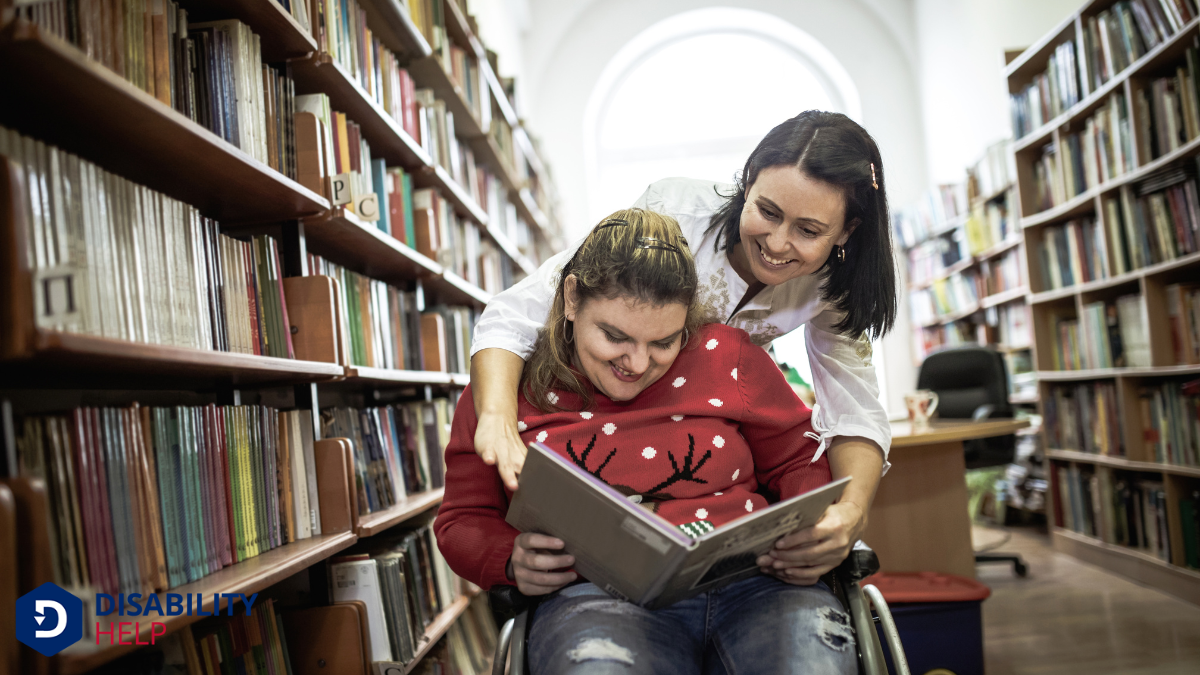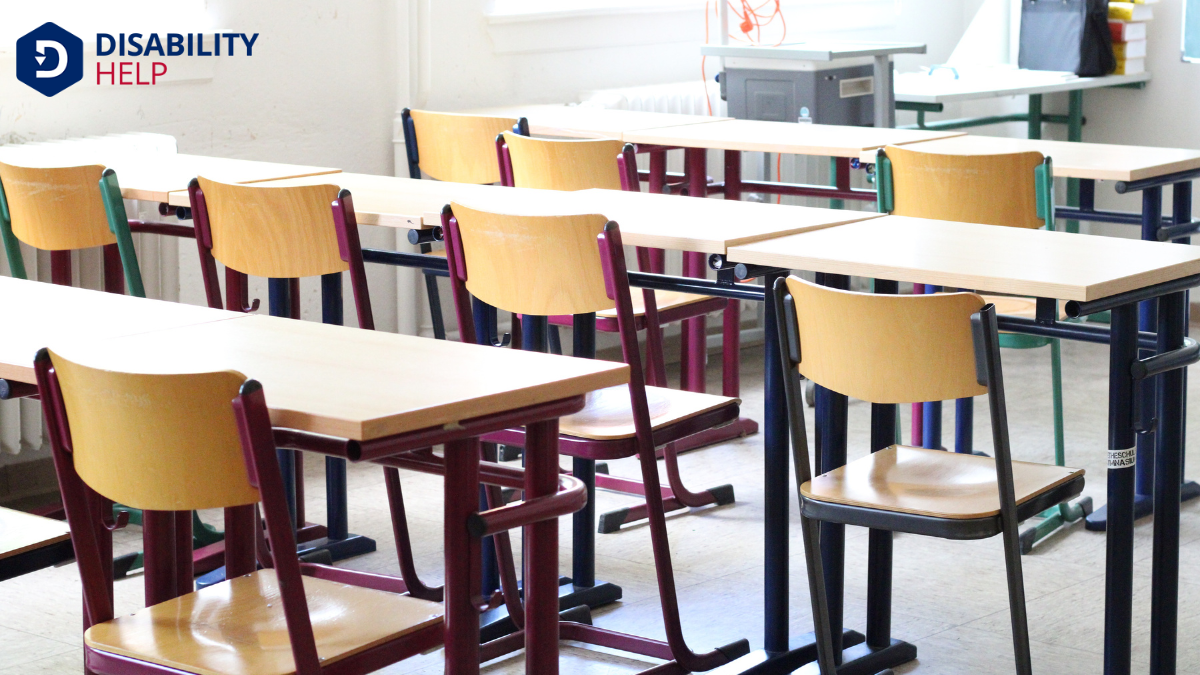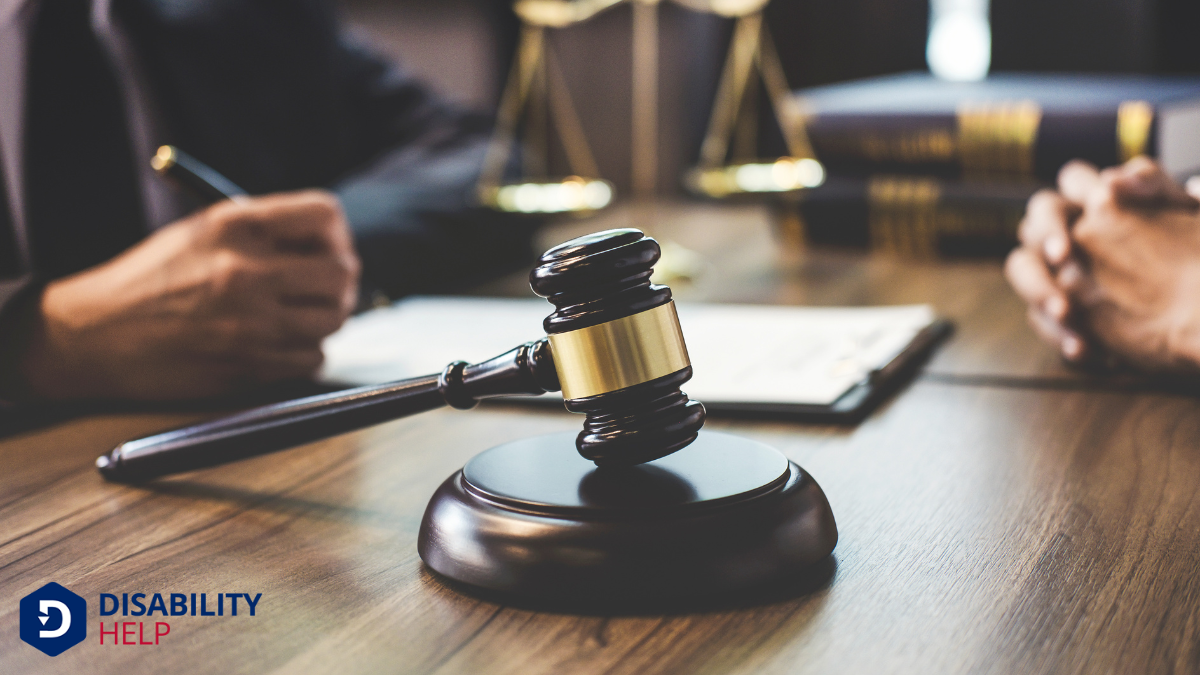As we explore whether public schools can refuse enrollment due to a disability, we must consider the legal landscape shaped by the Individuals with Disabilities Education Act (IDEA) and Section 504A provision of the Rehabilitation Act of 1973 that prohibits discrimination based on disability in p... of the RehabilitationThe process of helping individuals with disabilities achieve and maintain their optimal physical, se... Act. These laws guarantee that students with disabilities have equal accessThe principle that all individuals, including those with disabilities, should have equal opportunity... to education. However, how do schools balance these obligations with their resource limitations? Let's uncover the complexities and potential challenges schools face in meeting their legal responsibilities.
Key Takeaways
- Public schools cannot deny enrollment based on a student's disability due to legal protections like IDEA and Section 504.
- Denying enrollment based on disability violates the requirement to provide Free Appropriate Public Education (FAPE).
- Schools must ensure access to education for students with disabilities through individualized accommodationsModifications or adjustments in healthcare settings to support patients with disabilities. and support.
- Families can seek legal recourse if a school denies enrollment due to a disability.
- Inclusive practices and compliance with legal obligations are essential for equitable educational access.
Understanding the Individuals With Disabilities Education Act (IDEA)
When it comes to the Individuals With Disabilities Education Act (IDEA), understanding its core principles is vital for anyone maneuvering the education system. This federal law guarantees that children with disabilities have the right to a free appropriate public education (FAPE) tailored to their unique needs.
We, as advocates, must recognize that IDEA mandates schools to create an Individualized Education Program (IEP)A plan developed for U.S. students with disabilities to ensure they receive tailored educational ser... for each eligible child, fostering an inclusive environment.
IDEA emphasizes parental involvement, guaranteeing we’re part of the decision-making process. It also advocates for the least restrictive environment, meaning kids should learn alongside their peers whenever possible.
The Role of Section 504 of the Rehabilitation Act

Building on our understanding of the Individuals With Disabilities Education Act (IDEA), it's important to explore another key piece of legislation: Section 504 of the Rehabilitation Act.
Section 504 guarantees that students with disabilities aren’t discriminated against in any program receiving federal funding, including public schools. It requires schools to provide accommodations that allow students with disabilities equal access to education.
We should see Section 504 as a civil rightsThe rights of individuals to receive equal treatment under the law, including protection against dis... law. It protects all students with disabilities, even those who don’t qualify for IDEA services. This means schools must make reasonable modifications to meet the needs of these students, guaranteeing they’re not denied enrollment or participation due to their disabilities.
Understanding Section 504 helps us appreciate the legal safeguards in place for an inclusive educational environment.
Defining Free and Appropriate Public Education (FAPE)
Let's explore what Free and Appropriate Public Education (FAPE) truly means for students with disabilities.
We need to understand the specific requirements that define FAPE and the legal obligations schools must meet to guarantee every child receives a fair education.
Understanding FAPE Requirements
Every student with a disability is entitled to a Free and Appropriate Public Education (FAPE), a fundamental right under the Individuals with Disabilities Education Act (IDEA).
We must grasp what "appropriate" means in this situation. It doesn’t imply a perfect education but rather one tailored to meet the unique needs of each student, guaranteeing they've access to the general curriculum.
FAPE requirements mandate that students receive special education servicesEducational programs and services designed to meet the needs of students with disabilities. in the least restrictive environment, meaning they should learn alongside peers without disabilities whenever possible.
Additionally, an Individualized Education Program (IEP) helps outline specific goals and accommodations.
Together, we can guarantee that the educational experience supports growth and learning for all students, embracing their potential and fostering inclusionThe practice of creating environments in which any individual or group can be and feel welcomed, res....
Legal Obligations for Schools
Recognizing the importance of FAPE requirements, we turn our focus to the legal obligations schools must uphold to guarantee these educational rights.
Schools are mandated by law to provide students with disabilities access to Free and Appropriate Public Education. This means they must tailor educational programs to meet each student's unique needs.
It's not just about physical access; it’s about ensuring meaningful participation in learning. Schools must develop Individualized Education Programs (IEPs) for eligible students, detailing specific accommodations and services.
We must remember that denying enrollment based on disability violates these obligations. Schools are legally bound to work with families to create inclusive environments, ensuring every child receives the education they deserve, fostering growth and potential for all.
Legal Protections for Students With Disabilities
Although traversing the educational system can be challenging, students with disabilities are protected under several important legal frameworks that guarantee their right to education.
The Individuals with Disabilities Education Act (IDEA) guarantees that students receive a Free Appropriate Public Education (FAPE) tailored to their unique needs. Section 504 of the Rehabilitation Act prohibits discrimination based on disability, guaranteeing equal access to educational opportunities.
Additionally, the Americans with Disabilities Act (ADA)A U.S. law that prohibits discrimination against individuals with disabilities in all areas of publi... extends these protections, mandating accessibilityThe design of products, devices, services, or environments to be usable by people with disabilities.... and accommodations in public schools. Together, these laws create a robust safety net, affirming our commitment to inclusivity and fairness.
Knowing these rights helps us advocate for students' needs and guarantees they aren't unjustly denied the education they deserve. We can work together to uphold these protections.
School District Responsibilities and Obligations

While managing the responsibilities of accommodating students with disabilities, school districts must adhere to legal mandates that guarantee access and equityFairness and justice in the way people are treated, especially in the allocation of resources and op....
We recognize that fulfilling these obligations guarantees an inclusive environment where every student can thrive.
Our responsibilities include:
- Providing necessary accommodations: We must guarantee that necessary support and resources are available to facilitate learning for students with disabilities.
- Developing Individualized Education Programs (IEPs): Tailored educational plans should be crafted with input from parents, teachers, and specialists.
- Guaranteeing staff training: Educators and staff need appropriate training to effectively support and understand the diverse needs of students.
- Monitoring compliance: Regular reviews and assessments help maintain adherence to legal standards and improve educational outcomes.
Common Barriers to Enrollment for Students With Disabilities
When exploring the challenges that students with disabilities face during enrollment, we often encounter systemic barriers that can hinder their access to education. These obstacles include inadequate awareness and training among school staff, leading to misunderstandings about legal obligations.
Sometimes, schools may have complicated procedures that unintentionally discourage families from enrolling their children. Additionally, outdated physical infrastructure can make schools inaccessible, especially when proper accommodations aren't prioritized.
Moreover, communication barriers between schools and parents can further complicate the process. Parents may not receive clear information about their rights or the steps needed to guarantee their child receives appropriate support.
It’s essential for us to recognize these barriers and advocate for more inclusive practices, assuring every student has the chance to thrive in their educational journey.
The Impact of Resource Limitations on Schools
As we consider the impact of resource limitations on schools, it's clear that funding constraints and staffing shortages can greatly affect the services available to students with disabilities.
These challenges often mean that schools struggle to provide the necessary support, potentially hindering students' educational experiences.
Let's explore how these limitations shape the opportunities and barriers faced by both schools and students.
Funding Constraints and Challenges
Despite the best intentions to provide equal educational opportunities for all students, funding constraints often pose significant challenges for public schools.
We see how these financial limitations can impact the quality and accessibility of education, leaving schools struggling to meet the needs of students with disabilities.
Consider these challenges:
- Limited access to specialized equipment: Critical tools and technology may be out of reach due to budget limitations.
- Inadequate training: Teachers might lack the necessary training to effectively support students with disabilities.
- Program cuts: Essential programs designed to aid student development may be reduced or eliminated.
- Facility limitations: Physical accessibility improvements often take a backseat when funds are tight.
Staffing Shortages Impact Services
Staffing shortages greatly impact the services schools can provide to students with disabilities. When there aren’t enough trained professionals, we struggle to meet every student’s needs.
Teachers and support staff are stretched thin, often leading to increased workloads and stress. As a result, individualized attention and specialized instruction may suffer. We recognize that every student deserves the resources to thrive, yet limited staffing can hinder this goal.
It’s important to understand that these shortages don’t reflect a lack of commitment but rather systemic challenges. Recruiting and retaining qualified staff is tough with budget constraints and high demand.
We must advocate for more resources and support, ensuring that schools can hire and maintain the necessary staff to support all students effectively.
Legal Recourse for Families Facing Enrollment Denials

How can families navigate the complex landscape of legal recourse when a public school denies their child enrollment due to a disability?
We must first understand our rights and the resources available to us. The Individuals with Disabilities Education Act (IDEA) and the Americans with Disabilities Act (ADA) protect our children's right to education.
Here's how we can proceed:
- Seek Legal Counsel: Consult with an attorney specializing in education law for guidance and support.
- File a Complaint: Submit a formal complaint with the Department of Education's Office for Civil Rights.
- Request Mediation: Engage in mediation to reach a resolution before pursuing litigation.
- Gather Documentation: Collect all relevant records, assessments, and correspondence to strengthen our case.
Balancing Legal Requirements With Practical Challenges
As we navigate the legal protections in place for students with disabilities, we must also consider how schools can effectively implement inclusive practices.
It's essential that we recognize not just the laws but how they translate into daily operations within our schools.
Together, let's explore how we can bridge these legal mandates with the practical realities educators face.
Legal Protections Overview
While guaranteeing equal educational opportunities is a fundamental promise, balancing legal requirements with practical challenges can be complex.
We must navigate a landscape where laws like the Individuals with Disabilities Education Act (IDEA) and Section 504 of the Rehabilitation Act come into play. These laws offer protections and guarantee that students with disabilities have the same access to education as their peers.
Let’s break down key legal protections:
- IDEA: Guarantees special educationCustomized educational programs designed to meet the needs of students with disabilities. services tailored to individual needs.
- Section 504: Prohibits discrimination based on disability and guarantees accommodations.
- Americans with Disabilities Act (ADA): Extends anti-discrimination protections beyond schools.
- Free Appropriate Public Education (FAPE): Assures access to educational opportunities without charge.
Understanding these protections helps us uphold our commitment to inclusivity, despite the hurdles.
Implementing Inclusive Practices
Charting the path to implementing inclusive practices in schools requires us to balance legal obligations with the realities of limited resources and varying needs.
We must guarantee compliance with laws like the Individuals with Disabilities Education Act (IDEA) while recognizing the practical challenges schools face. Implementing inclusive practices isn't just about meeting legal requirements; it's about creating an environment where every student feels valued and supported.
We need to collaborate with educators, parents, and specialists to tailor approaches that work for our unique communities. It involves training staff, adapting curricula, and sometimes rethinking classroom dynamics.
Case Studies: Real-World Examples and Outcomes
Examining real-world outcomes, we find that case studies vividly illustrate how public schools handle enrollment for students with disabilities.
By diving into these examples, we can better grasp the complexities and challenges schools face and the progress being made.
- Case 1: A student with autism was initially denied enrollment. After legal intervention, the school adapted its programs to accommodate their needs.
- Case 2: A wheelchair user faced accessibility issues, prompting the district to renovate facilities, benefiting all students.
- Case 3: A child with dyslexiaA learning disorder characterized by difficulty reading due to problems identifying speech sounds an... received tailored support after parents advocated for specialized learning plans, leading to academic success.
- Case 4: Following a discrimination complaint, a school implemented staff training on disability awareness, fostering a more inclusive environment.
These cases emphasize the importance of advocacyThe act of arguing in favor of, supporting, or defending the rights and interests of individuals or ... and adaptation in education.
Frequently Asked Questions
How Can Parents Advocate for Their Child's School Enrollment?
We can start by understanding our rights under the Individuals with Disabilities Education Act. Let’s gather documentation, communicate clearly with school officials, and seek support from advocacy groups. Together, we can guarantee our child receives the education they deserve.
What Steps Should Be Taken if Enrollment Is Denied?
If enrollment is denied, we should gather all relevant documentation, contact the school district for clarification, and file a formal complaint if necessary. Seeking support from advocacy groups or legal counsel can strengthen our case.
Are There Financial Resources for Legal Assistance in Enrollment Disputes?
We can explore financial resources like legal aid organizations or disability rightsThe legal and human rights afforded to individuals with disabilities, often the focus of advocacy an... groups for assistance. They're often available to guide us through the process and help guarantee fair treatment in enrollment disputes. Let's seek support together!
Can Private Schools Refuse Enrollment Due to a Disability?
We should know that private schools can refuse enrollment based on a disability, unlike public schools. It's essential that we comprehend each school's admission policies and legal obligations to guarantee fair access for all students.
What Are the Long-Term Effects of Enrollment Denial on Students?
When students face enrollment denial, we see long-term impacts like reduced self-esteem and limited academic opportunities. Let’s guarantee they feel included and supported, promoting growth and success. It’s essential we advocate for equal educational access.
Conclusion
In our journey to understand the rights of students with disabilities, it's clear that public schools can’t refuse enrollment based on disability. IDEA and Section 504 guarantee every child receives a Free Appropriate Public Education. While schools may face resource challenges, they're legally obligated to accommodate all students. When families encounter enrollment barriers, legal recourse is available. Let's continue advocating for inclusivity and equality, guaranteeing every student has the opportunity to thrive in their educational journey.






